
Hey there, Tappsters!
You only have JUST A WEEK left before our prize draw for April closes, and one lucky Tapper goes off on their spa adventure. The winner will receive a £500 spa voucher, courtesy of the Leadership Skills Foundation.
Taking part is easy: For every 5 days in a row you answer questions, you will receive an entry code.
At the end of the month, we share the winning codes on our socials and email the winners, too.
Read more about the details of the comp and see the full terms and conditions here.

Now, onto our special blog and it’s the second part of our findings on parental leave (read part one here), and we are digging into the data behind the questions suggested by our Teacher Tappers…
Quick recap
The big numbers from part one:
- Just over a quarter (27%) of Teacher Tappers have used some kind of parental leave in the last ten years (or are imminently about to take it!).
- Among those taking leave, as well as those taking maternity leave (62%) and paternity leave (34%), 12% took shared parental leave and 2% took adoption leave.
Back to school
What do teachers do after parental leave?
Most return to the same position full-time — and this pattern holds fairly steady across age groups. (Though note: there were relatively few responses from teachers in their 20s and over 50.)
Still, a significant number do return part-time — and this becomes more common with age:
21% in their 50s
40% of teachers in their 20s (based on just 37 responses)
27% in their 30s and their 40s.
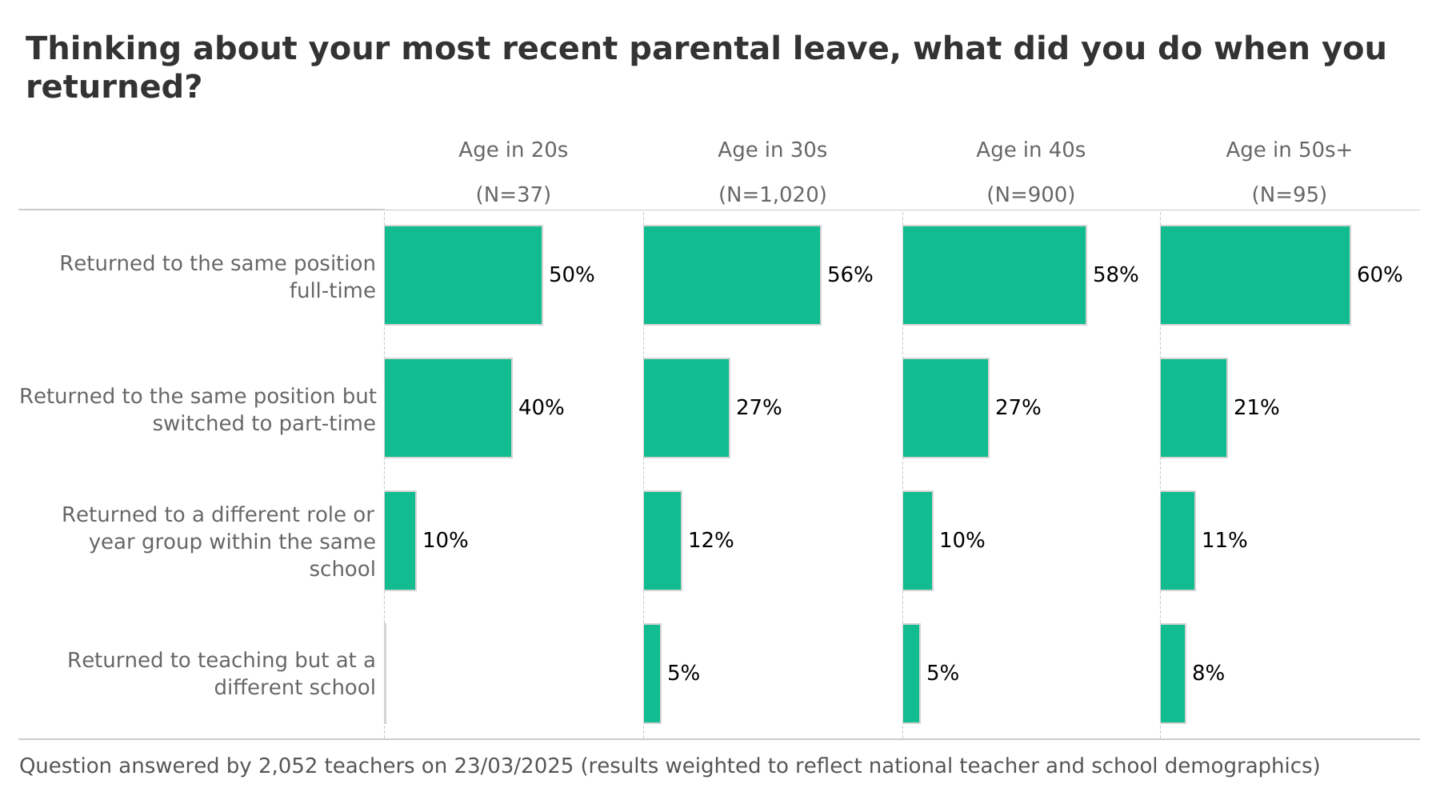
Where we do see a sharp difference is between male and female teachers: men are much less likely to return to work part-time.
Only 2% of male teachers returned part-time, compared to 38% of female teachers.
Is this because women are more often the lower earner in the household? No. When we looked at the data by who the higher earner in the couple was, the pattern remained: women were significantly more likely to return part-time, regardless of income.
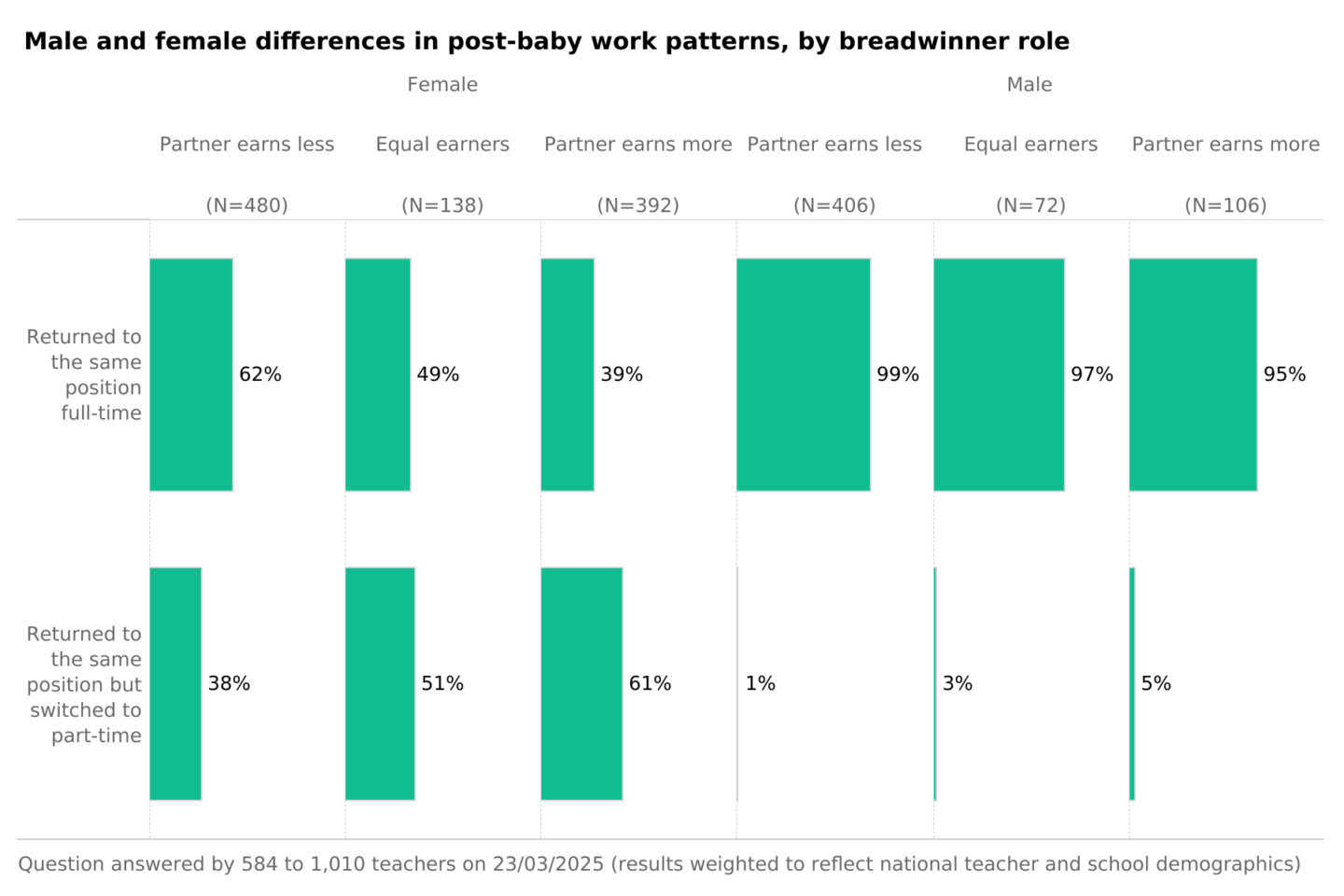
Requesting part-time work
Good news: most teachers who requested flexible working had their requests approved.
Only 16% of female teachers and 14% of male teachers had their requests denied outright.
However, many faced some hurdles along the way:
Some teachers had only part of their request approved — this applied to 8% of female teachers and 13% of male teachers.
Around a third had their request initially challenged but ultimately approved (32% of female teachers, 33% of male teachers).

Part-time leaders
Many school leaders want to work part-time after having a child — but how many can stay in leadership when their hours are reduced?
The good news: most who wanted to remain in leadership managed to do so. Among them, 74% of teachers in their 30s and 66% of teachers in their 40s were able to work part-time while keeping their leadership roles.
A very small number of teachers in their 50s also answered the survey (20). Among this group we see a totally different pattern: just 33% were able to keep their role and 67% had to step down. Unfortunately, we don’t have a bigger sample and therefore must be cautious about drawing conclusions – but it appears that this is an area where things have improved for working parents.
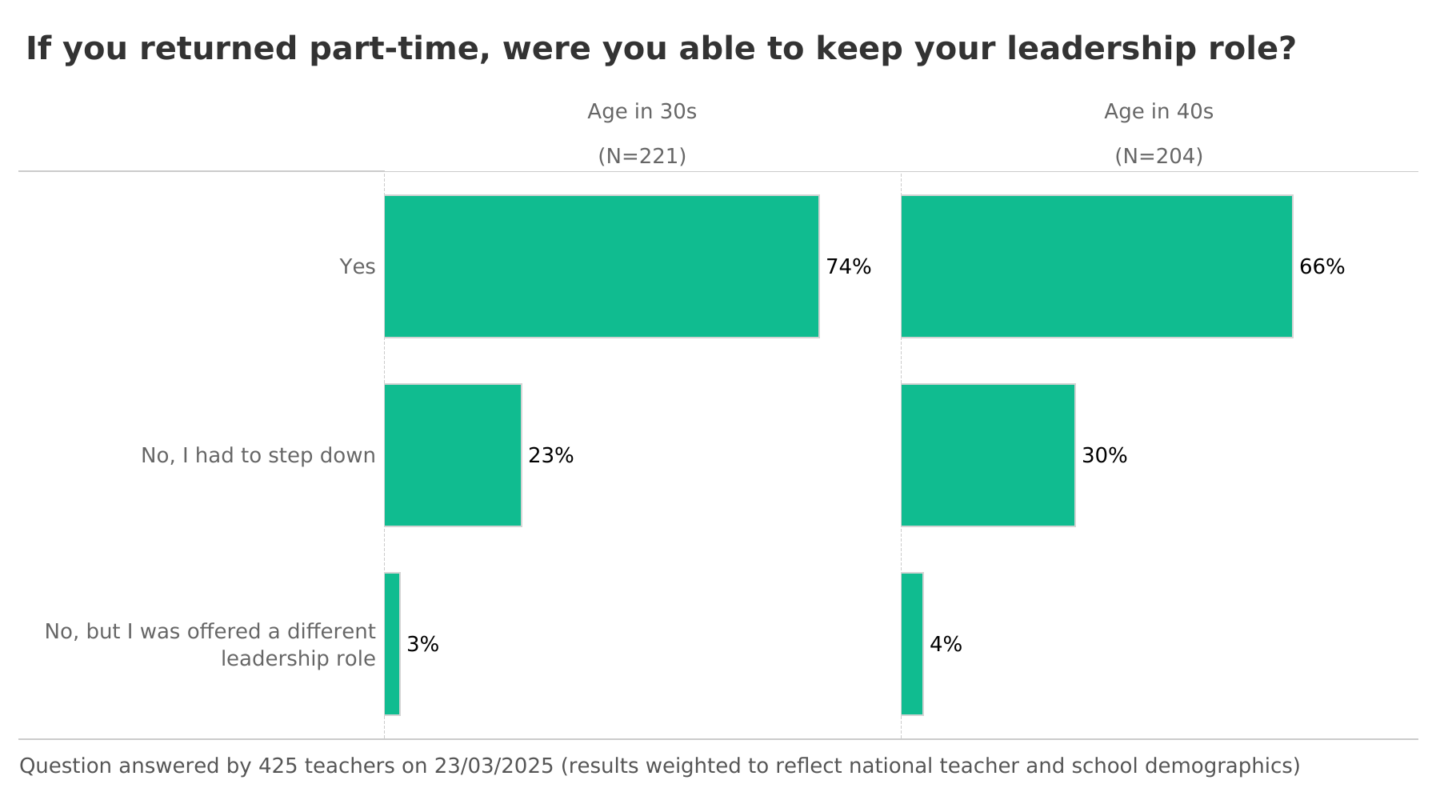
The return
Among teachers who shared their parental leave, some chose to ‘return’ at the start of the summer holidays to maximise the amount of leave they could take. Female teachers were more likely to use this option than male teachers — 67% compared to 52%.
This was a feature that many Teacher Tappers specifically wrote in to ask about. The results show why: some teachers who shared their leave didn’t realise this option existed. In fact, 7% of female teachers and 8% of male teachers said they weren’t aware that parental leave could be split in this way.
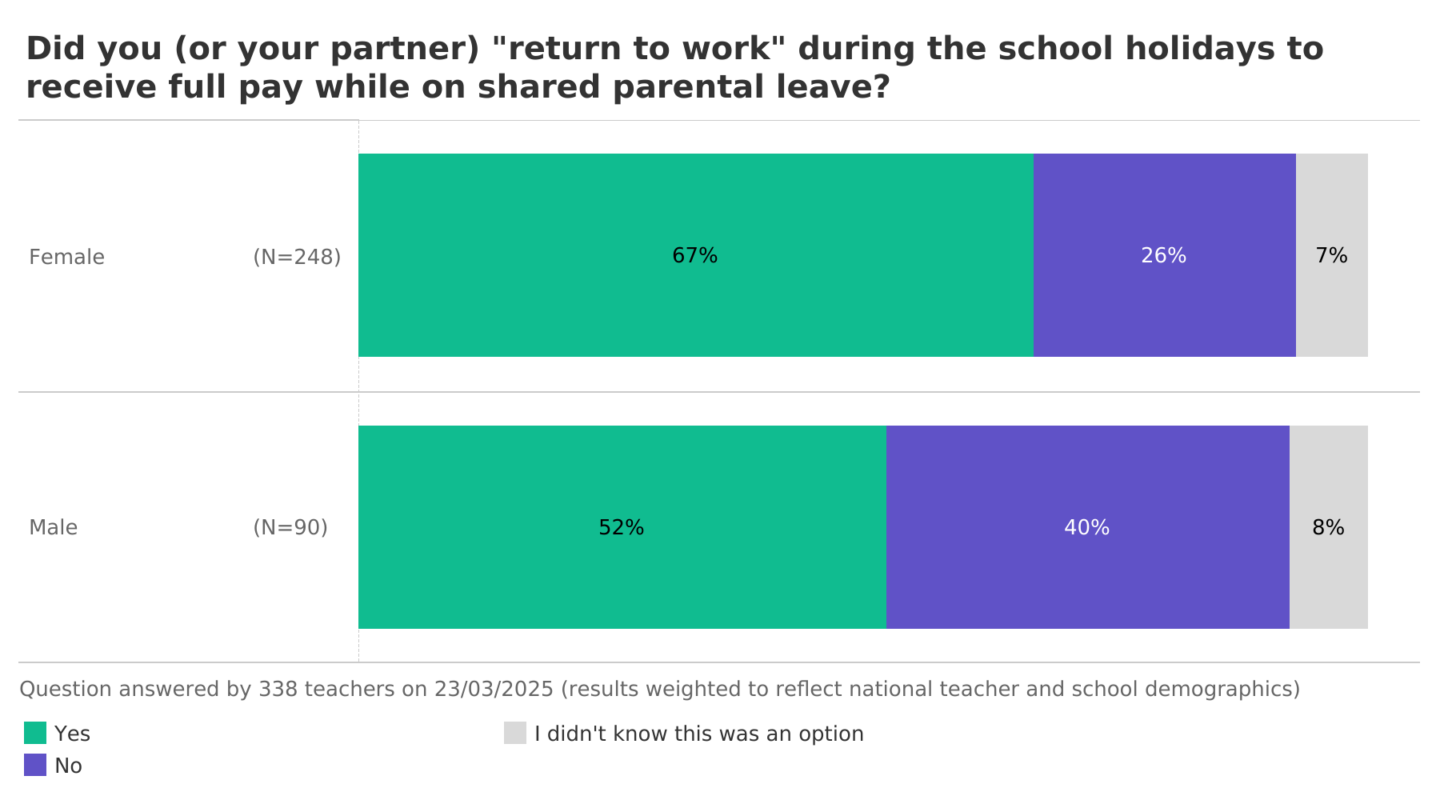
Supporting returning teachers
School life can feel like a series of transitions — guiding pupils from early years into formal classrooms, from primary to secondary school, and eventually into further education or employment.
Yet, when it comes to teachers navigating major life or career changes, that same structured support is often missing.
One clear example is the return from parental leave. The majority of teachers did not have a reintegration meeting — and many would have found one beneficial.
- 70% of female primary teachers did not have a meeting; 43% of them said they would have found it useful.
- 72% of female secondary teachers also didn’t have a meeting, and 48% would have welcomed one.
Among male teachers, reintegration meetings were even less common — but also less likely to be considered necessary:
- 95% of male primary teachers had no meeting, with 19% saying it would have been helpful.
- 97% of male secondary teachers also didn’t have one, and only 16% would have found it useful.
These findings highlight a gap in how schools support staff during key transitions — even as they expertly manage those of their pupils.
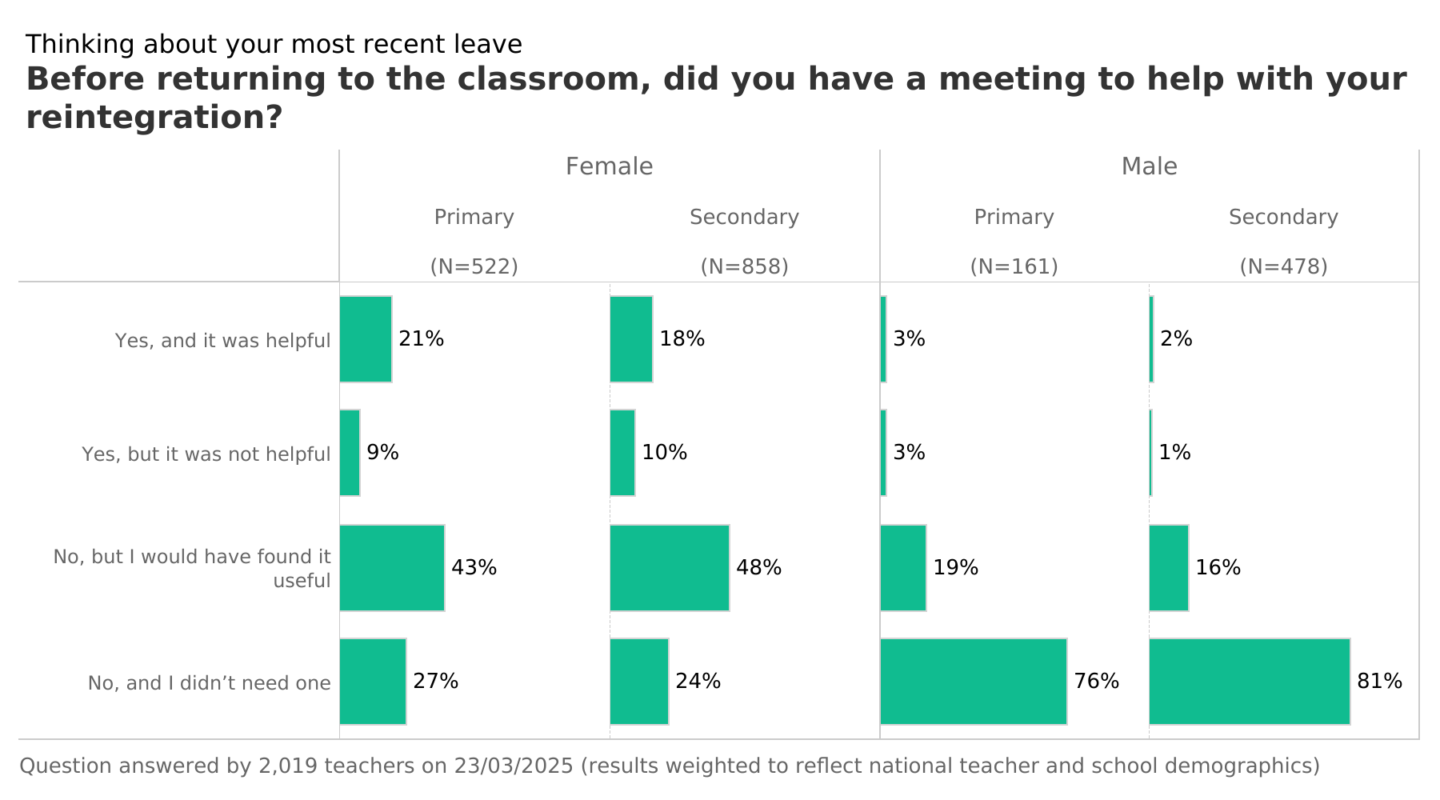
What next?
These findings show that while lots of teachers manage parental leave well, there’s still room to improve.
For starters, the support they get when returning to work. Simple things — like clear information and a proper check-in — could make a big difference. After all, if schools are great at guiding pupils through big changes, teachers deserve the same care too.
If you share these findings in your workplace or teaching-communities, please let us know how it went! Contact us england@teachertapp.co.uk and give us your feedback.


